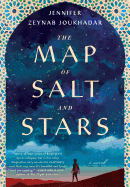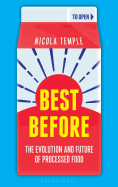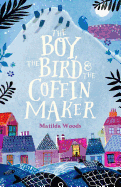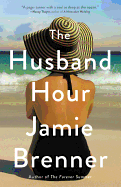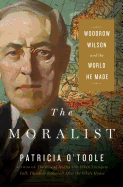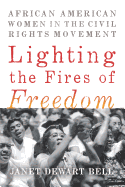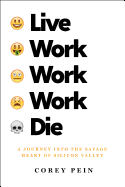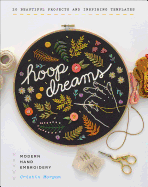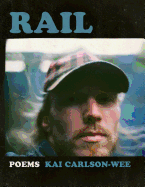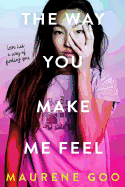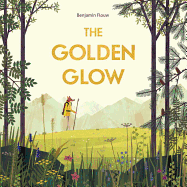Friday, May 25, 2018
On Memorial Day, we remember those who died during active military service. It's a good time to immerse yourself in historical fiction about those who gave their lives for their country, with these novels set during wartime that provide historical background and a compelling story.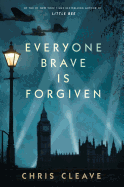 Everyone Brave Is Forgiven (Simon & Schuster, $16) by Chris Cleave is a World War II novel based loosely on the author's grandparents. This insightful love story focuses on several British citizens and soldiers who each supported the war in different ways. With beautiful prose, Cleave takes on difficult topics like violence and loss but balances that with lightness and a subtle sense of humor.
Everyone Brave Is Forgiven (Simon & Schuster, $16) by Chris Cleave is a World War II novel based loosely on the author's grandparents. This insightful love story focuses on several British citizens and soldiers who each supported the war in different ways. With beautiful prose, Cleave takes on difficult topics like violence and loss but balances that with lightness and a subtle sense of humor. 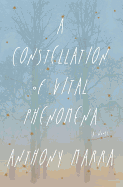 Set during the two Cechnyan wars, A Constellation of Vital Phenomena (Hogarth, $16) by Anthony Marra is a poignant, riveting novel. Eloquently written, the story is at times horrifying in describing the violence of war, but ultimately, it shows how life and love can survive anything, how two people can find healing and hope in each other and how we are all interconnected.
Set during the two Cechnyan wars, A Constellation of Vital Phenomena (Hogarth, $16) by Anthony Marra is a poignant, riveting novel. Eloquently written, the story is at times horrifying in describing the violence of war, but ultimately, it shows how life and love can survive anything, how two people can find healing and hope in each other and how we are all interconnected.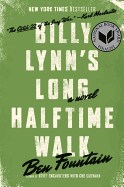 Closer to home, Billy Lynn's Long Halftime Walk (Ecco Press, $16.99) by Ben Fountain is a powerful story about a U.S. Army squad that lost members in Afghanistan during a highly publicized battle. The novel covers the last day of their victory tour at home, at a Dallas Cowboys game where these bewildered young men who have seen such tragedy are treated as heroes. It's insightful, heartbreaking and hilarious.
Closer to home, Billy Lynn's Long Halftime Walk (Ecco Press, $16.99) by Ben Fountain is a powerful story about a U.S. Army squad that lost members in Afghanistan during a highly publicized battle. The novel covers the last day of their victory tour at home, at a Dallas Cowboys game where these bewildered young men who have seen such tragedy are treated as heroes. It's insightful, heartbreaking and hilarious.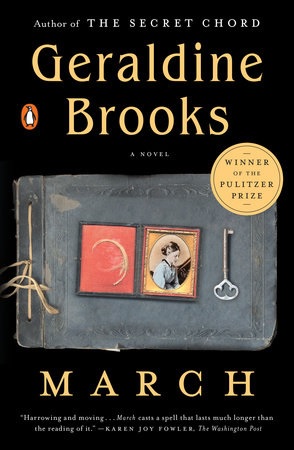 Winner of the 2006 Pulitzer Prize for Fiction, March (Penguin Books, $16) by Geraldine Brooks follows a minister (the father of the fictional Little Women) serving during the Civil War. His own experiences and those of the soldiers he encounters change him forever and make him question his own beliefs. With rich historical detail, Brooks provides a close-up view of one man's internal struggles in the midst of war. --Suzan L. Jackson, freelance writer and blogger at Book By Book
Winner of the 2006 Pulitzer Prize for Fiction, March (Penguin Books, $16) by Geraldine Brooks follows a minister (the father of the fictional Little Women) serving during the Civil War. His own experiences and those of the soldiers he encounters change him forever and make him question his own beliefs. With rich historical detail, Brooks provides a close-up view of one man's internal struggles in the midst of war. --Suzan L. Jackson, freelance writer and blogger at Book By Book
The Map of Salt and Stars
by Jennifer Zeynab Joukhadar
Jennifer Zeynab Joukhadar weaves a stunning dual narrative about families, crossing borders and finding a new way home in her debut novel, The Map of Salt and Stars. After her father's death, 12-year-old Nour has returned to Syria from New York City with her widowed mother and sisters. Mama, who paints and sells elaborate maps for a living, is convinced the move was the right decision, but Nour feels lost without Baba and his stories. When the family's home and neighborhood are bombed, they become refugees, on the move throughout the Middle East with millions of others. Traveling from Syria to Jordan and across northern Africa, Nour's story unfolds alongside the legend of Rawiya, a young woman who apprenticed herself to a famed medieval mapmaker.
Nour sees the world in a swirl of colors and senses: Mama's voice is red when she's annoyed, and the dough she kneads for dinner smells golden. Joukhadar mixes Nour's synesthetic impressions with sharp, photographic images of destruction and loss, mapping her harrowing journey not by miles but by stories. Rawiya's adventures are equally compelling: as she and her companions seek to map the known world, they cover much of the same ground Nour's family will traverse centuries later. Both girls encounter terrors and challenges they never imagined, and both must find the courage to create new paths for themselves. Joukhadar's absorbing narrative offers a vividly particular glimpse into the refugee crisis and two unforgettable heroines united by their bravery and hope. --Katie Noah Gibson, blogger at Cakes, Tea and Dreams
Discover: Jennifer Zeynab Joukhadar's debut novel is a stunning dual narrative of a medieval mapmaker and a modern-day Syrian refugee family.
Do This for Me
by Eliza Kennedy
Eliza Kennedy (I Take You) has written a funny and insightful novel in Do This for Me. High-powered Manhattan attorney Raney Moore has a seemingly perfect life: twin teenage daughters, loving entomologist husband, career she adores. Then, when she finds out that her husband is having an affair, she essentially burns their life down, in a very public and hilarious way.
In the wake of her actions on the day of her discovery, Raney begins to discover uncomfortable truths about herself, her marriage and her workplace. As she and her husband tentatively seek reconciliation, Raney uses her best friend and the paralegals from her firm to help her research why men have affairs, why exactly sex is so important and what men are looking for in women. This leads her on a quest to understand the interactions between men and women in both personal relationships and in the workplace, timely given the #metoo movement.
But, in typical Raney fashion, even as she attempts to understand logically how she's come to this, things go even more uproariously awry, and soon she finds herself at the end of her metaphorical rope. Can she ever put her life back together? Does she even want to?
Amusing, clever and thoughtful, Do This for Me is an excellent novel. Although Raney is a bit larger than life, many readers will be able to identify with aspects of her journey of self-discovery--and may find themselves pondering some of the same things Raney does. --Jessica Howard, bookseller at Bookmans, Tucson
Discover: A Manhattan lawyer goes on a hilarious quest to understand sex after her life falls apart in epic fashion.
The Husband Hour
by Jamie Brenner
After her husband, Rory, dies, Lauren Kincaid retreats to the comfort and nostalgia of her family's New Jersey beach house. A widow at age 24, she welcomes the quiet change of pace from Los Angeles--where Rory played professional hockey with the Kings before shocking everyone by abandoning sports to serve in Iraq.
Four years after Rory's death, Lauren continues to be consumed by her emotional inertia, unable to move forward yet finding solace in her solitude. "Longport in the winter was a recluse's paradise. Some people called it a ghost town; Lauren had become quite comfortable in the company of ghosts." Her quiet life is upended when her parents arrive for the summer. Financial stress has frayed Beth and Howard Adelman's marriage, leaving the couple barely speaking while on the verge of losing their business. Accompanying them is Stephanie, their wild-child daughter who drinks excessively while neglecting her young son. Adding to the dysfunction is Matt Brio, a struggling filmmaker determined to gain Lauren's trust and cooperation for a tell-all documentary that threatens to reveal all that Rory kept hidden.
Jamie Brenner (The Forever Summer) has crafted a fast-paced and compelling novel with The Husband Hour, a heartfelt family drama that captures the subtle nuances of the Jersey shore (a Philadelphia native, Brenner knows her terrain well) as well as grief's complicated aftermath. Each character is mourning a loss and tending long-buried hurts, secrets and regrets. Whether they choose to stay stagnant or move forward, they'll need to accept the inevitable truth about everyone they thought they knew, including themselves. --Melissa Firman, writer, editor and blogger at melissafirman.com
Discover: During one summer with her family, a young widow struggles to understand the secrets her husband left behind.
Mystery & Thriller
What You Want to See
by Kristen Lepionka
Kirsten Lepionka (The Last Place You Look) has created a tired, yet defiant, private investigator who fits her name, Roxane Weary, all too well. When interior designer Marin Strasser's fiancé, Arthur, becomes convinced that she's having an affair, he hires Roxane to follow Marin. Marin turns up dead a few days later, with Arthur as the prime suspect in the shooting, and Roxane finds herself answering unfriendly questions from old cop buddies of her late father.
Determined to get to the bottom of the case--partly for Arthur's sake and partly because she's too stubborn to let it go--Roxane keeps digging into Marin's life. She finds a string of dark secrets: from Marin's arrests for shoplifting to her several previous marriages to her ne'er-do-well son. Then, to Roxane's surprise, Arthur himself is gunned down, and suddenly not only Roxane's life but also the lives of some of the people closest to her are at risk.
Nuanced and intriguing, The Last Place You Look brings to life the seamy side of Columbus, Ohio. Roxane's many complications--a whisky habit, a flaky ex-girlfriend and her strained relationship with her father's former best friend, with whom she's been sleeping--make her a compelling character. The mystery that Roxane slowly pieces together is smart and surprising, and will appeal to lovers of noir and those who enjoy cases that aren't open-and-shut. Sure to rank among the pantheon of hardboiled PIs, Roxane Weary is not to be missed. --Jessica Howard, bookseller at Bookmans, Tucson, Ariz.
Discover: In this nuanced noir, stubborn private investigator Roxane Weary keeps digging into a case, even after the murder of the woman she was hired to follow.
Food & Wine
Best Before: The Evolution and Future of Processed Food
by Nicola Temple
In Best Before: The Evolution and Future of Processed Food, biologist, conservationist and translator Nicola Temple (Sorting the Beef from the Bull) sketches the progression of modern processed foods in everyday terms for everyday readers.
She moves from food fraud to faux food, but immediately dispels any assumptions that all processed food is bad. She explains that "food processing is any action, chemical or mechanical, that is done to food in order to change it or preserve it." So, jam counts as processed food. So does frozen corn. But so, too, more troublingly, does mechanically separated meat: "a gelatinous pink paste that looks a lot like the inside of a hot dog"--which, Temple clarifies, "is exactly what is on the inside of a hot dog."
In the tradition of Mary Roach, Temple wades through a morass of science, guiding readers with clever quips and memorable examples. Among intimidating terms like glyphosphate, lignin and nanosilic, Temple offers humor as a life raft. Regarding strawberries, she says, "It's important to note that cellular respiration is not the same as breathing; as much fun as it might be to think of strawberries as heavy-breathers, they are really just rapid respirers."
Ultimately, Temple dictates no hard rules, just general guidelines. Given the complicated nature of processed foods, her advice is refreshingly simple: "Stop. Cook. Eat. Enjoy. Do it with your partner, your kids, do it as often as you can." --Katie Weed, freelance writer and reviewer
Discover: With humor and clarity, a science writer teaches about processed food.
Biography & Memoir
The Moralist: Woodrow Wilson and the World He Made
by Patricia O'Toole
Historians have long viewed Woodrow Wilson as one of the most enigmatic men to occupy the White House. In The Moralist: Woodrow Wilson and the World He Made, Pulitzer Prize finalist Patricia O'Toole (The Five of Hearts) posits that much of Wilson's puzzling behavior can be explained by his medical history.
Well researched and insightful, The Moralist will appeal to those seeking a broader understanding of the 28th president and why his moralistic world vision was rejected by the American people and the world. O'Toole chronicles a series of early strokes that Wilson suffered--one as early as 1896--and theorizes that he may have had at least a dozen more. More concerning to O'Toole than the exact number is the frequency. Such repeated traumas indicate serious neurological problems that left Wilson medically compromised upon assuming office in 1913. O'Toole believes those previous strokes--and not the catastrophic event in 1919--contributed to Wilson's weakened presidency.
Many researchers and physicians now cite stress as a mitigating factor for many medical conditions. O'Toole concurs, noting that political agita preceded Wilson's strokes. "The pattern with Wilson was very typical: political crisis, physical illness, followed by seclusion." His succession of strokes left him irritable and "psychologically inflexible," major factors in his unwillingness to compromise with Congress or Cabinet members. This, O'Toole argues, led to the ultimate failure of Wilson's peace goals after World War I and impaired his abilities as a global world leader. --William H. Firman Jr., historian and writer
Discover: This biography of Woodrow Wilson explores the ways the president's world vision and leadership suffered because of his frequent strokes.
History
Lighting the Fires of Freedom
by Janet Dewart Bell
Formatted as a series of testimonials, Janet Dewart Bell's Lighting the Fires of Freedom highlights African American women from across the United States and throughout socioeconomic classes who participated in the civil rights movement. Some, like Kathleen Cleaver, took a radical approach to changing the world through her leadership in the Black Panthers. Others, like Aileen Hernandez, worked with unions and in government at the Equal Employment Opportunity Commission to build a better future. Without editorializing, Bell places these stories alongside each other to show the movement's many facets.
Dr. June Jackson Christmas, like Hernandez, opted into government, but much of her story in the book concerns being one of the first black women at Vassar. Through this profile, Bell suggests that Christmas's breaking into the ivory tower deserves the same attention as Cleaver's work in revolutionary politics and Hernandez's in union organizing.
But Bell also pays attention to women whose stories have been crowded out by those of the men in their lives. Cleaver is one, as is Myrlie Evers-Williams, whose husband's murder has long obscured her work for the early NAACP and fight for justice.
Lighting the Fires of Freedom is meant to bring untold stories to the fore, a complementary piece to other, broader looks at American history regarding race. Bell reminds readers that one story is never enough to truly explain a movement. --Noah Cruickshank, adult engagement manager, the Field Museum, Chicago, Ill.
Discover: Lighting the Fires of Freedom collects the stories of nine African-American women who were involved in the civil rights movement in a range of ways.
Business & Economics
Live Work Work Work Die: A Journey into the Savage Heart of Silicon Valley
by Corey Pein
In 2015, Corey Pein, a journalist with a tech background, flew to California to experience firsthand the "gleaming consumer paradise of boom-time San Francisco." There he would work his way into the intense world of the tech industry by attempting to sell his idea for an ambiguously legal app for smart phones. The "quasimythical tech industry elite" all but laughed him out of the city (and sometimes they did, in fact, laugh--loudly and openly). But the joke is on them, because Pein has captured the whole ordeal in wry and scrupulous prose in Live Work Work Work Die: A Journey into the Savage Heart of Silicon Valley.
It opens with Pein already skeptical of what he might find in San Francisco. He knew, for example, that rents would be high. But even he was surprised at the city's punishing cost of living: an outdoor tent he rents through Airbnb turns out to be his most pleasant sleeping arrangement.
By the book's end, he reveals Silicon Valley to be far more dangerous than what the average Luddite might expect. A popular economic vision to emerge from the place, says Pein, is that of a "technofeudalist" state. He also draws a direct line from the "nerdy sociopathic" tech dudes with fascist ideas to the rise of white nationalism across the United States. By turns very funny and deeply unsettling, Pein's Live Work Work Work Die is a scathing takedown of the tech industry that anyone with an Internet connection would do well to read. --Amy Brady, freelance writer and editor
Discover: This eye-opening account of Silicon Valley from the inside argues that utopian visions of the tech industry couldn't be more wrong.
Art & Photography
Hoop Dreams: Modern Hand Embroidery
by Cristin Morgan
Cristin Morgan is an embroidery artist whose first project was for her middle-school art class. "I worked on it during bus rides to and from school for a week or two, head down, lost in my own world... I fell in love." Her first book, Hoop Dreams, is for beginners of any age.
Modern, simple and quick are the themes here. Morgan understands how to get the most out of basic tools and techniques. One of the first projects is a cursive "hello" using her provided template and straight stitches to build thick textured curves, a good way for a new stitcher to get impressive results. Her patterns are cute and trendy. Many have a wholesome, pretty aesthetic--lipsticks, flowers and ferns, bees, letters, an eye, a rainbow, watermelon slices, a hand forming a peace sign, multicolored confetti, all sandwiched between dark pink endpapers. Some of the patterns are displayed in embroidery hoops, others are on clothing or on accessories that involve some hand or machine sewing, such as a zippered bag, jewelry and a tote bag. One project explains how to make pom-poms.
The stitch directory covers 12 basic stitches, each illustrated with a photograph, a neatly drawn diagram with numbered steps, and clear directions that follow those numbers. Her templates are printed in the back of the book, and also on carbon paper in an envelope inside the back cover. Novices looking for simple, attractive patterns to follow or use as inspiration will find this a rewarding guide. --Sara Catterall
Discover: Embroidery beginners of any age will enjoy this clear, well-designed book of patterns, tips and basic stitches.
Poetry
Rail
by Kai Carlson-Wee
Echoing Guthrie, Dylan and Springsteen, the poems of Kai Carlson-Wee's first collection are the stories of nomadic vagabonds. They spill over with the jargon and brand-name clutter of a life riding the rails, hitchhiking dirt roads and sleeping it off in the fields of the upper Midwest. The melancholic voices in Rail are those of brothers and fathers, hoboes and railyard bulls, Native Americans and immigrants, stoners and skateboarders, the lovesick and lovelorn. Strung together, they become a kind of Homeric narrative about leaving a childhood home in search of a home of one's own--a journey down "dirt roads/ leading in every direction away from whatever you are." The quest's destination may be unknown at the outset, but the narrator of "Poser" puts his finger on it: "I am/ working to make myself better. Learning/ the rhythm and speed of my heart.... Trying out the words in my own mouth until/ I am finally able to sing."
Something of a Renaissance man, Minnesota-born poet Carlson-Wee is also a photographer, documentary filmmaker and former professional rollerblader--with MacDowell, Stegner, Bread Loaf and Sewanee fellowships to boot. He knows skate parks ("the metalheads listened to boom-boxes perched on the stairs"), county fairs (mechanics "testing the Tilt-a whirl... sipping from plastic bottles/ of Windsor Canadian") and railyards ("bulls in the jungle like janitors cleaning the sinks"). Whether riding a rollerblade rail or a freight rail, Carlson-Wee speaks with the authentic voice of a nation of unmoored drifters searching for a home. Rail is a knockout debut. --Bruce Jacobs, founding partner, Watermark Books & Cafe, Wichita, Kan.
Discover: In a striking collection of kindred narrative poems, Carlson-Wee captures the freedom, hardship and serendipity of life on the road.
Children's & Young Adult
The Boy, the Bird, and the Coffin Maker
by Matilda Woods, illus. by Anuska Allepuz
Allora is a town where "fish jump out of the sea and straight into your mouth." A town where "you never get cold because even in winter the sun keeps the snow away." And, best of all, Allora is a town "so far away from everything else," he will never find them again.
Sadly for the boy and "his little bird and only friend," his mum's stories about Allora are exaggerations. One year after their arrival, his mother has died, and young Tito Bonito is cold, hungry and stealing food from kindly coffin maker Alberto. Some 30 years ago, a plague struck Allora, and Alberto lost his entire family to "the sickness." Now the old man lives alone, building coffins during the day and working on his own coffin at night. When Tito and his bird, Fia--perhaps the most fantastical of things in Matilda Woods's delightful novel--find their way to him, Alberto's somber routine begins to change.
Tito joins the coffin maker in his workshop, learning, talking, working, "and for the first time in thirty years, the room [echoes] with two voices instead of one." But Tito is still "absolutely terrified" about something, and it takes nearly dying in a bitter storm before he fully accepts the new home Alberto so freely offers.
Woods has penned a gentle fable, one rich in hope that promotes the strength of kindness. Her magical realism nods to the like of Isabel Allende and Gabriel García Márquez, perfectly tailoring the genre for a middle-grade audience. Anuska Allepuz's whimsical illustrations add to the magical feel. Sweet, earnest and not to be missed. --Lynn Becker, blogger and host of Book Talk, a monthly online discussion of children's books for SCBWI
Discover: Lonely Alberto's days are transformed when a young, scared boy and his magical bird become part of his life.
The Way You Make Me Feel
by Maurene Goo
That Clara Shin's favorite place--a hilltop overlooking her native Los Angeles--was made famous by the classic movie Rebel Without a Cause is perfectly fitting. Since getting suspended freshman year for smoking, 16-year-old Clara's been all about causing mayhem--just because. Nominated for junior prom queen, Clara makes mortal enemy Rose Carver (overachiever, class president and "long-lost Obama daughter") apoplectic when she actually wins. Victory inspires an epic prom prank that ends in a bloody (fake) all-out fight and fire (real).
To avoid suspension and offset the conflagratory damage, both girls are sentenced to working together all summer for Adrian, Clara's father, on his Korean Brazilian food truck. Trapped in un-air-conditioned tight quarters, the girls can't even manage civility. Fed up with their hostility, Adrian decides to let the sparring pair flounder or flourish and sends them off alone to manage the truck for a week. Their growing on-the-job-efficacy is surpassed only by their burgeoning, remarkable friendship. Throw in a coffee-supplying entrepreneur named Hamlet, the "kimchi squat," an impetuous runaway to Mexico and a food truck competition worth $100,000 and you're on your way to the glories of The Way You Make Me Feel.
As meltingly fun as I Believe in a Thing Called Love, Maurene Goo's follow-up also provides affecting depth, seamlessly inserting hot-topic issues including immigration (L.A. native Clara's Korean heritage via Brazil), privilege ("there's a lot of pressure on black girls to be better than everyone else"), entitlement (the glamor of social influencers), even familial abandonment (single parenthood, wealthy parental guilt assuaged with expensive gifts). From careless jokester to becoming a "total try-hard," Clara finally matures into the realization that "car[ing] so deeply" makes the "risk of the bad stuff... so worth the good stuff." --Terry Hong, Smithsonian BookDragon
Discover: Two high school enemies are forced to spend a summer working together.
The Golden Glow
by Benjamin Flouw
One evening while he's flipping through his old botany books, plant collector Fox finds something mysterious: a page with text but no illustration. "The golden glow is a plant from the Wellhidden family," the book says. "It is very rare and only grows high in the mountains." That's all Fox needs to hear. The next morning, he sets off with his backpack, a search party of one.
On his way up the mountain, Fox runs into Bear, Wolf and other woodland animals who offer help or advice. When he finally reaches the mountain's summit, he's disappointed to see no flowers. But after he sets up camp and sits down to enjoy the sunset, he finds, buried in the snow....
Young readers know the score: in a kids' book about a search, the elusive object is always found. What will surprise them is what Fox does when he finds it: instead of picking the flower, he draws a picture of it, realizing that "this golden glow is more beautiful here on the mountaintop than it ever would be in a vase in his living room."
The Golden Glow's eco-friendly message doesn't seem a whit heavy-handed because the art goes down so easy. Benjamin Flouw's talent is fusing handpainted, textured cut-paper shapes and digital paintings into visually rewarding combinations. His debut also features themed two-page spreads presenting labeled objects: the contents of Fox's backpack, trees that he identifies on his journey and flowers that he recognizes. They're like pages from the world's snazziest field guide. --Nell Beram, freelance writer and YA author
Discover: In search of a rare plant, a fox journeys up a mountain, where he faces a tough decision.


